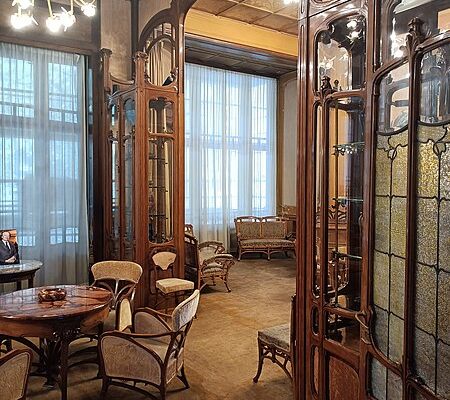This large townhouse in Brussels was designed by Victor Horta and built between 1895 and 1900.
The building was commissioned by Armand Solvay, son of industrialist Ernest Solvay who invented the Solvay process used to produce soda ash (anhydrous sodium carbonate). With his father’s fortune available to him, Solvay allowed Horta to spare no expense both in time spent designing every detail and selecting expensive materials.
While the exterior is a typical example of an Art Nouveau townhouse, the interior is special. What’s particularly striking is the illumination of the interior. Both white and colored lights seem to filter in from every corner with the effect being artistically toned down by the selection of wall and floor coverings. Horta employed 23 types of marble and 17 types of timber in a decorative scheme in which red and orange tones were used to enhance the luxurious atmosphere.
By the 1950s, the house had lost its original occupants and started to decay. Fortunately, the famous Wittamer family established their haute couture workshop in the basement of the building and began restoring the building. UNESCO recognized the building as a UNESCO World Heritage Site in 2000 under the title “Major Town Houses of the Architect Victor Horta.”

